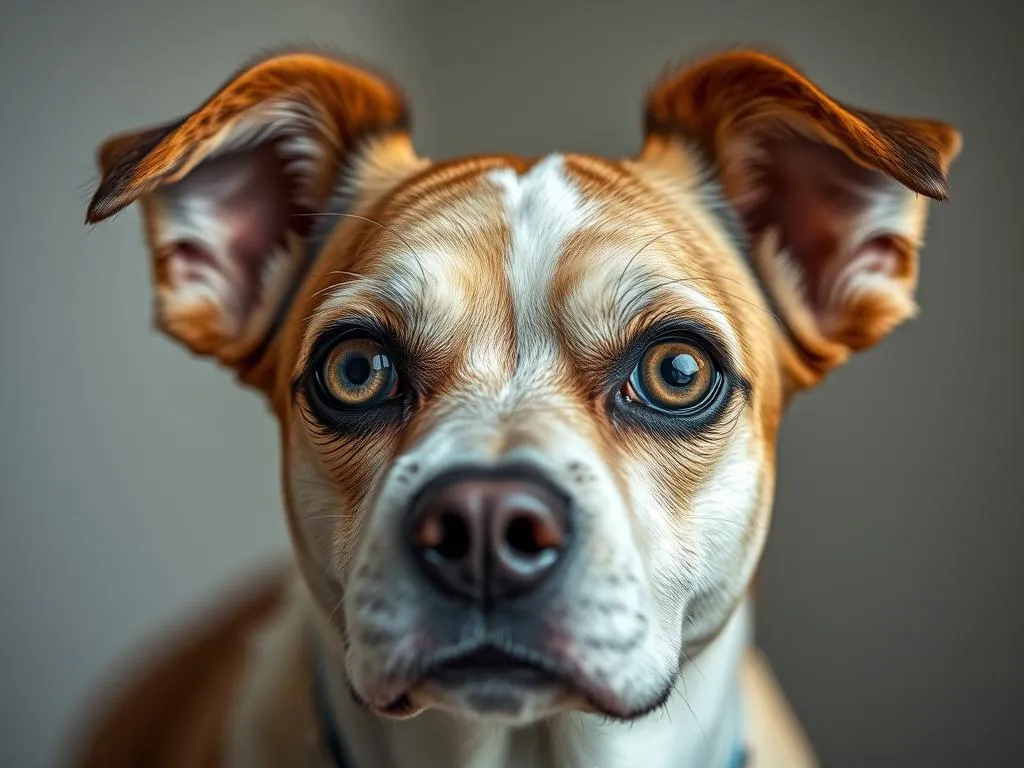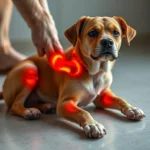
Cataracts in dogs are a common eye condition that can significantly affect a pet’s quality of life. Understanding this condition is crucial for pet owners who want to ensure the well-being of their furry companions.
Understanding Cataracts in Dogs
What are Cataracts?
Cataracts are a clouding of the lens in the eye, which can lead to decreased vision or blindness if left untreated. In dogs, cataracts can develop in one or both eyes and can vary in size and severity. The lens of a healthy eye is clear, allowing light to pass through and focus on the retina. When a cataract forms, it obstructs this light, resulting in blurry vision and, eventually, the loss of sight.
Causes of Cataracts in Dogs
Cataracts in dogs can arise from several factors:
-
Genetic predispositions: Certain breeds are more prone to developing cataracts, making genetics a significant factor. Breeds such as the Cocker Spaniel, Poodle, and Boston Terrier are known to have higher incidences of this condition.
-
Age-related cataracts: As dogs age, they are more likely to develop cataracts. These cataracts are often a result of natural changes in the eye’s lens over time.
-
Secondary cataracts: Some health conditions can lead to cataract formation. For example, dogs with diabetes may experience cataracts as a complication of their condition. Inflammation and other eye issues can also result in secondary cataracts.
Symptoms of Cataracts in Dogs
Pet owners should be vigilant for signs that may indicate cataracts. Common symptoms include:
-
Cloudy eyes: The most noticeable sign is a white or bluish opacity in the eye, indicating a cataract formation.
-
Behavioral changes: Dogs may exhibit signs of confusion or hesitance, especially in unfamiliar environments. They may also bump into objects or become less active.
-
Difficulty seeing in bright light: Many dogs with cataracts will struggle to see in bright sunlight or may avoid such environments altogether.
Differentiating cataracts from other eye problems, such as glaucoma or retinal diseases, requires veterinary attention, as these conditions may have overlapping symptoms.
Diagnosis of Cataracts in Dogs
Veterinary Examination
If cataracts are suspected, a visit to the veterinarian is essential. A thorough veterinary eye exam will involve checking the dog’s vision and assessing the eyes’ overall health. The veterinarian will look for the characteristic signs of cataracts and rule out other potential issues. Early detection is crucial, as it can influence treatment options and outcomes.
Diagnostic Tests
Veterinarians may employ various diagnostic tests to confirm cataracts:
-
Slit-lamp examination: This specialized tool allows the veterinarian to examine the eye’s internal structures in detail. It helps in assessing the cataract’s size and density.
-
Ophthalmoscopy: This procedure involves using an instrument called an ophthalmoscope to examine the retina and other parts of the eye.
These tests are vital in determining the cataract’s nature and extent, which can guide treatment decisions.
Treatment Options for Cataracts in Dogs
Non-Surgical Approaches
While surgery is often the primary treatment, there are non-surgical approaches that may help manage symptoms:
-
Dietary changes and supplements: Some studies suggest that a diet rich in antioxidants, such as vitamins E and C, may support eye health. Omega-3 fatty acids can also be beneficial.
-
Medications: In some cases, veterinarians may prescribe medications to help manage inflammation or discomfort associated with cataracts. However, these are not cures and primarily focus on symptom management.
Surgical Options
Cataract surgery is the most effective treatment for restoring vision in dogs. The procedure typically involves:
-
Lens removal: The cloudy lens is surgically removed and replaced with an artificial lens.
-
Success rates and risks: The success rate for cataract surgery in dogs is generally high, with many dogs regaining significant vision post-surgery. However, as with any surgical procedure, there are risks involved, such as infection, retinal detachment, or complications from anesthesia.
Post-Surgery Care
After surgery, dogs will require specific care to ensure a smooth recovery:
-
Follow-up visits: Regular check-ups are necessary to monitor healing and manage any complications.
-
Rehabilitation: Gradual reintroduction to normal activities is essential. Owners should provide a safe environment and gradually allow the dog to explore their surroundings.
Prevention of Cataracts in Dogs
Regular Veterinary Check-ups
Routine veterinary check-ups play a vital role in the prevention and early detection of cataracts. Regular eye examinations can catch potential problems before they escalate, allowing for timely intervention.
Nutritional Considerations
A balanced diet is crucial for maintaining overall eye health. Pet owners should consider:
-
Recommended diets: Foods rich in antioxidants, such as leafy greens and fish, can support eye function.
-
Supplements: Omega-3 fatty acids and specific vitamins may help promote better eye health and potentially reduce the risk of cataracts.
Lifestyle Adjustments
Implementing certain lifestyle changes can also minimize the risk factors associated with cataracts:
-
UV protection: Just as humans wear sunglasses, dogs can benefit from UV protection, especially during outdoor activities. Dog goggles designed for UV protection are available.
-
Exercise and wellness: Regular exercise and a healthy weight can reduce the risk of conditions such as diabetes, which is associated with cataracts.
Living with a Dog that Has Cataracts
Adjusting to Changes in Vision
When a dog develops cataracts, it’s essential to help them adapt to their vision changes:
-
Creating a safe environment: Remove obstacles in the home and create clear pathways to minimize the risk of injury.
-
Routine: Maintain a consistent routine to help your dog feel secure and navigate their environment more easily.
Emotional Support for Your Dog
Vision loss can be distressing for dogs, and they may experience anxiety or confusion. Providing emotional support can help:
-
Understanding their needs: Pay attention to your dog’s behavior and be patient during this adjustment period.
-
Comfort: Offer comforting interactions, such as gentle petting and verbal reassurances, to help ease their anxiety.
When to Seek Help
Pet owners should be aware of signs that indicate a need for veterinary intervention:
-
Sudden changes in behavior: If your dog becomes increasingly disoriented or shows signs of distress, consult a veterinarian.
-
Signs of pain or discomfort: If your dog is exhibiting signs of discomfort, such as pawing at their eyes, it’s essential to seek professional help.
Conclusion
Cataracts in dogs are a significant concern for many pet owners, but understanding this condition can greatly impact your dog’s health and quality of life. Regular veterinary check-ups, proper nutrition, and lifestyle adjustments can help prevent or manage cataracts effectively. Providing support and care for dogs with vision changes can make a profound difference in their well-being. Prioritizing your dog’s eye health is an essential part of responsible pet ownership.
FAQs About Cataracts in Dogs
Can cataracts be prevented in dogs?
While not all cases of cataracts can be prevented, maintaining a healthy lifestyle and regular veterinary check-ups can significantly reduce the risk.
What breeds are most susceptible to cataracts?
Certain breeds such as Cocker Spaniels, Poodles, and Boston Terriers are more prone to developing cataracts due to genetic factors.
How long can a dog live with cataracts?
Many dogs can live comfortably with cataracts, especially if they are not affecting their quality of life. However, untreated cataracts can lead to blindness.
Are cataracts painful for dogs?
Cataracts themselves are not painful, but the underlying conditions that may cause them could lead to discomfort. Regular veterinary check-ups are essential to manage any associated issues.
Will my dog’s vision return after surgery?
In most cases, cataract surgery can restore significant vision in dogs, although outcomes can vary based on the individual dog’s health and the severity of the cataracts.









